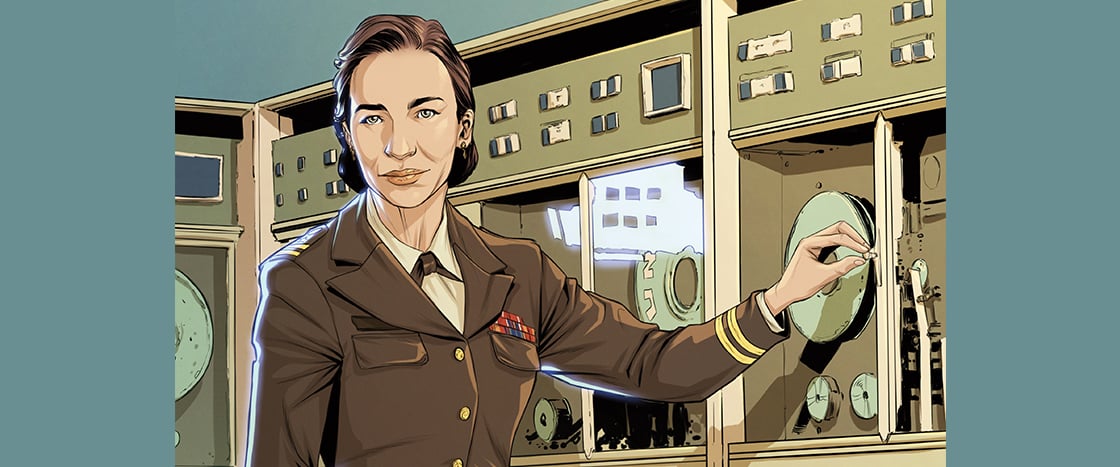B Christopher/Alamy Stock Photo
The pattern of holes on this tape told early computers what to do. Computers carried out the instructions one line at a time.
Anyone who has used computers knows that they don’t always work the way they’re supposed to! When a computer has an error, it’s often called a bug. That term became popular after an incident in 1947 during a computer repair by computer scientist Grace Hopper. Back then, Hopper and her team were fixing a broken computer when they found an actual bug—a moth—inside it!
The computer that Hopper was working on was one of the first in the U.S. It looked nothing like today’s computers. It filled a room at Harvard University in Cambridge, Massachusetts.
While serving in the U.S. Navy, Hopper had solved math equations with computers. At the time, many nations were fighting in World War II. Some of Hopper’s calculations helped to end the war. But that’s not all this trailblazer did.
Anyone who’s used computers might know this. The devices don’t always work the way they’re meant to! Computers sometimes have errors. An error is often called a bug. This term became popular in 1947. Computer scientist Grace Hopper was fixing a computer. She and her team found a moth inside. An actual bug had caused the problem!
The computer Hopper was working on was one of the first in the U.S. It looked nothing like today’s computers. It filled an entire room. It was located at Harvard University. It’s in Cambridge, Massachusetts.
Hopper served in the U.S. Navy before doing research at Harvard. Many nations were fighting in World War II at the time. Hopper solved math problems with computers. Some of Hopper’s calculations helped end the war. But that’s not all this trailblazer did.

